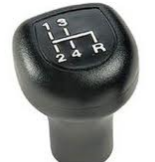
Driven to Lead: What Makes People Tick
 “Our understanding of leadership can be no better than our understanding of what makes humans, all humans, tick – what are the ultimate motivators of our behavior.” ~ Warren Bennis
“Our understanding of leadership can be no better than our understanding of what makes humans, all humans, tick – what are the ultimate motivators of our behavior.” ~ Warren Bennis
Leadership is about relationships with others. You cannot lead without understanding the innate drives that are essential to human development and survival.
Decades of research have given us numerous theories about drive and motivation, to include:
- Maslow’s Hierarchy of Needs (physiological, safety, love and belonging, esteem, and self-actualization)
- Intrinsic and extrinsic motivators (inner satisfaction and desires, and external rewards and payoffs)
- The well-documented drives to achieve autonomy, mastery, and purpose in our personal and professional lives.
- Economist Milton Friedman’s agency theory, which argues that rational self-interest motivates all human behavior – and that businesses’ sole purpose is to maximize shareholder returns. (Over time, behavioral economists have proved there’s much more to human behavior than rational self-interest.)
Scientists have fragmented the search for the most fundamental drives that make humans tick. Every discipline has proposed a different theory that contains some truths, as viewed through the discrete lenses of:
- Cultural anthropology
- Sociology
- Psychology
- Genetics
- Evolutionary biology
- Economics
- Neurology
Perhaps the most noteworthy deduction about human behavior can be attributed to Charles Darwin’s scientific studies, published more than 150 years ago. In The Descent of Man (1871), the British naturalist observed that the most important distinction between humans and the lower species is our innate moral sense: our conscience.
The Four-Drive Theory
 Humans have evolved to survive differently from other animals. We have endured as a species because we learned to work in groups and rely on problem-solving skills, rather than brute force, inborn physical capacities, and instincts.
Humans have evolved to survive differently from other animals. We have endured as a species because we learned to work in groups and rely on problem-solving skills, rather than brute force, inborn physical capacities, and instincts.
The late Harvard Business School Professor Paul R. Lawrence suggested that Darwin’s insights about human drives have largely been ignored. He proposed a theory of human behavior based on “renewed Darwinism” and four key drives:
- To Acquire what we need for survival, conception, and our offspring’s survival. This drive far surpasses our drives to acquire food, water, warmth, and a mate. We are driven to attain things that interest us, give us a sense of identity, and meet our loved ones’ needs.
- To Defend ourselves and our offspring from threats. We’ll protect our family and groups to which we belong, our ideas and beliefs, our sense of pride and hope, and our self-image.
- To Bond and form long-term, mutually caring, and trusting relationships with others.
- To Comprehend – to learn, create, innovate, and make sense of the world and our place in it
Lawrence and Harvard Business School Dean Nitin Nohria applied these drives to the business world in Driven: How Human Nature Shapes Our Choices (Jossey-Bass, 2002). Leadership, they noted, must effectively balance these four basic human drives. While other species survive by feeding, mating, fighting, and fleeing, humans survive by feeding, mating, fighting, fleeing, befriending, and figuring out.
We achieve an optimal state of leadership when we cultivate and consciously manage all four drives. It’s not enough to be mindful of one or two of them. As Lawrence and Nohria wrote:
“We would predict that those who have found ways to satisfy all four drives (at least over time) will feel more fulfilled than those who have focused on some to the exclusion of others.”
Lawrence expanded his theories in Driven to Lead: Good, Bad, and Misguided Leadership (Jossey-Bass, 2010), citing contemporary brain research that supports how the four drives influence decision-making and human actions.
Survival of the Fittest Leaders
“It is not the strongest of the species that survives, nor the most intelligent. It is the one most adaptable to change.” ~ Charles Darwin
 There’s no question that surviving the corporate jungle requires intelligence, flexibility, political savvy, and the right amounts of courage and aggressiveness. Leadership is not for sissies – nor is it for authoritarian bullies.
There’s no question that surviving the corporate jungle requires intelligence, flexibility, political savvy, and the right amounts of courage and aggressiveness. Leadership is not for sissies – nor is it for authoritarian bullies.
You must be smart and emotionally intelligent to influence people, fully engage their hearts and minds, and encourage peak performance. Leaders must understand the four drives if they want to bring out the best in others and create a thriving workplace.
Great leaders can juggle multiple priorities, while making important decisions that drive people, performance, and the right organizational results. They use conscious and unconscious brain processes to form decisions in the face of uncertainty, rapid changes, and conflicting motivations.
The better we can balance our four basic drives, the more successful we’ll be at sustaining success.
Conflicting Impulses
We are hardwired to feel conflicting emotions. As leaders, we must continually assess our options and arrive at acceptable decisions.
Animals don’t have this problem. After acquiring food, shelter, a mate, and ways to defend themselves against threats, they’re basically set. We, on the other hand, must balance two additional drives:
- To bond with, trust, and care for other people (and to be trusted and cared for by them)
- To make sense of our lives (understand the “why” and “how”)
These additional drives allow us to adapt better than lower animals, and they also explain why our brains are three times larger than those of our nearest primate ancestors. But the drives also make us more responsive to the environment, giving us more to react to and consider when making decisions.
Modern managers and leaders must take into account so many different impulses. They must balance their teams’ needs and desires against those of the boss, corporation, customers, environment, and self.
We are built to work and achieve in groups: to lead and follow, to trust, protect, and care for each other, to learn from each other, and to acquire what we need collectively even if we later enjoy it individually. We have evolved in this way because it’s a very successful means of survival.
Bad Leadership Defined
 We expect the best from our leaders, but we’ve become inured to news reports of serious political, business and organizational failures – from Wall Street’s historic financial meltdowns and Bernie Madoff’s Ponzi scheme to tolerance of child abuse in religious institutions and rogue governments in countries like Zimbabwe and North Korea.
We expect the best from our leaders, but we’ve become inured to news reports of serious political, business and organizational failures – from Wall Street’s historic financial meltdowns and Bernie Madoff’s Ponzi scheme to tolerance of child abuse in religious institutions and rogue governments in countries like Zimbabwe and North Korea.
Lawrence described “corporate horror shows” like Enron and the mortgage-backed security debacle in the January-February 2011 edition of the Ivey Business Journal:
“The man on the street looks on these fiascos and says, with some justice, that here were a bunch of greedy crooks that were powerful enough to take thousands of innocent employees, customers, and investors down with them, not to mention the millions affected by a worldwide financial crisis. I take a somewhat different view. Here were corporations whose governance structure lacked the equivalent of a drive to bond and a drive to comprehend. Had those drives been part of their charters, along with a decision-making process that gave all four drives their full weight, these companies would have had a way to stop themselves.”
Indeed, bad leadership becomes an appalling part of the human condition when those at the top focus solely on acquiring more for themselves. These “horrible bosses” ignore basic human decency and others’ needs. They have no interest in bonding and getting along with others (unless it furthers their agenda). They spend more time covering up their crimes and misdemeanors than finding legitimate ways to succeed, exploring others’ ideas, and taking an interest in their colleague’s lives.
Good leaders take appropriate actions and make sound decisions that are not based on self-interest. They manage all four drives, recognizing that inaction and lousy decisions spring from focusing on only one or two drives, to the exclusion of others.
Evil Leadership
Evolutionary psychologists estimate that about 2% of the population lacks the gene for bonding. These individuals have little to no sense of empathy for others, and they have zero desire to form mutually beneficial relationships. These are, in short, psychopaths. Not all of them are criminals. Some can hide their behavior to avoid being shunned or imprisoned (at least until they’re caught), but all are decidedly dysfunctional.
An inability to bond (or lack of desire to do so) results in a deficient moral compass. These individuals have no conscience or sense of shame, and history has taught us the ramifications of allowing them to ascend to positions of power. (Think Hitler, Stalin, and their ilk.)
Unfortunately, a small minority also rise to the rank of CEO/business leader.
A Leadership Advantage
We cannot afford to be “mystified” by our own and others’ behaviors. We’ve seen how destructive we can be to each other. Corporate misdeeds have a significant reach as the world becomes an increasingly global village.
 Professor Lawrence’s theory of the four drives is universal, testable and actionable. Time will tell if it gains favor as a basis for understanding motivation and drives.
Professor Lawrence’s theory of the four drives is universal, testable and actionable. Time will tell if it gains favor as a basis for understanding motivation and drives.
For now, gaining an understanding of these drives gives you a tremendous leadership advantage – a valuable lens through which to view people’s behaviors.
